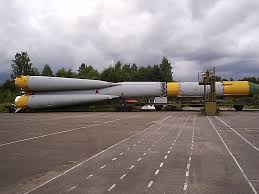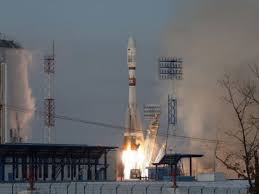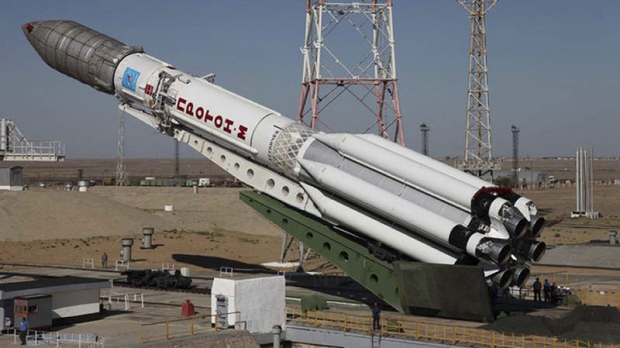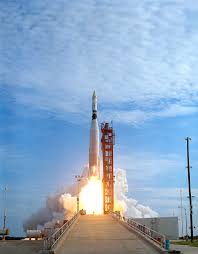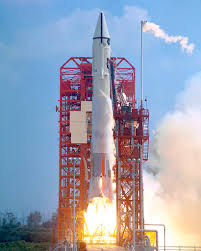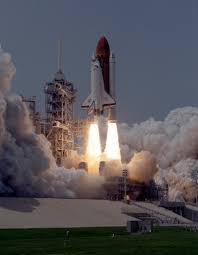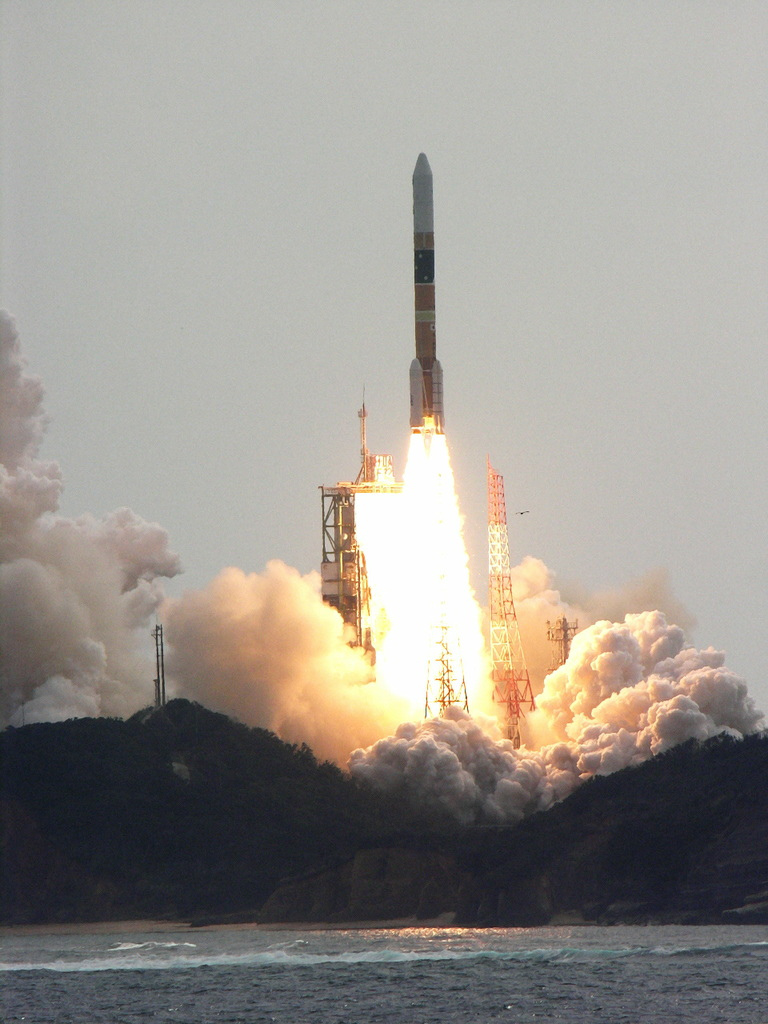Molnia: USSR, 19 probes launched towards Venus from 1961 to 1972 (max weight of the probes: 1 180kg)
Launcher of all Soviet Venusian probes from 1961 to 1972. The first launch took place in October 1960 around Mars (mission failure). It took its name only in 1965 after the launch of the Molina telecommunications satellite in an orbit which is also named. It is designed by the OKB 1 of Sergui Korolev and uses only kerosene / liquid oxygen couple, effective but complex to use. It consists of conical boosters and the evasive central body inherited from the R7 Smiorka ballistic missile, which can still be found today on Soyuz launchers.
There is also a third stage * block I derived from block E which was used for the Vostok missions (having put Youri Gagarin in orbit) and which places the upper components in low Earth orbit. The real innovation of Molnia is the 4th stage block L which ignites in orbit and propels a satellite on a very elliptical orbit (Molina orbit) or a probe on an interplanetary trajectory. For this, the first stage must be able to ignite in weightlessness, thanks to a solid propellant motor. Its role is to create sufficient acceleration to send the propellants to the engine but also to activate the turbines of the liquid propellant engine.
Soyuz FG-fregat, a probe launched towards Venus in 2005 (probe weight: 700kg)
Penultimate version of the Soyuz launcher which bears the name of the manned spacecraft. It incorporates modernized versions of the boosters, central body and block I from Molina. Block L is replaced by a fregat stage designed by OKB Lavotchkin. It is based on the propulsion module of fobos probes. This last stage uses hypergolic propellants, which makes it re-ignitable several times without gravity.
Proton: USSR, 10 probes launched towards Venus from 1975 to 1982 (max probe weight: 5,300 kg)
Launcher of all Soviet Venusian probes from 1975 to 1984. It is designed by Vladimir Tchelomei’s OKB-52 to be used as ballistic missiles launching giant nuclear warheads of 100 Mt (7,000 times more than the Hiroshima bomb). It was never deployed as a weapon but served as a heavy launcher for various Soviet programs including the scientific proton satellites which give it its name. For its first 3 stages, it uses toxic hypergolic propellants that are very easy to use. The 4th stage block D inherited from the lunar launcher N-1 runs on kerosene / oxygen and is re-ignitable without gravity.
Atlas-Agena: USA, 3 probes launched towards Venus from 1962 to 1967 (max weight of the probes: 245kg)
The first Atlas stage is based on the ballistic missile of the same name. Of a particularly ambitious design, the balloon tanks are not structuring. They are so thin that they collapse under their own weight if the tanks are not under pressure. It must therefore constantly be inflated with nitrogen and the filling of kerosene and oxygen is too long and complex for a ballistic missile.
Of the three engines required for takeoff, two are released during the flight to optimize the mass of the launcher. The Agena upper stage was originally designed to launch and modify the orbit of the reconnaissance satellite. It is therefore designed as a real spacecraft that can orient and propel itself into space even after a long period of inactivity. It was also a target vehicle for gemini missions during the docking tests. It uses one of the hypergolic propellants with limited performance but easy to use.
Atlas-Centaur : USA, 3 sondes lancées vers Vénus de 1962 à 1978 (masse max des sondes : 900kg)
This rocket undergoes a difficult development but became fully operational in 1965. It consists of the same first atlas stage as the Atlas-Agena. The upper centaur stage, however, is completely new. Like the first stage, it is made up of extremely light balloon tanks that require constant pressure. It runs on hydrogen and liquid oxygen, which is still the most efficient chemical couple today. Hydrogen is, however, complex to use because of its extremely low liquefaction temperature and very low density. Thanks to the use of an expansion cycle, the RL10 engine can be restarted several times.
Shuttle-IUS: USA, a probe launched towards Venus in 1989 (probe weight: 3,500kg)
The space shuttle comes from a dream of a versatile, safe, available launch system that can leave a lot of space for humans. For this, it is designed in the form of a glider capable of making an atmospheric reentry and then landing on an air strip. It includes a large hold for payloads and especially a manned compartment that can carry eight astronauts.
To be efficient during all phases of flight, the shuttle had to be fitted with complex hydrogen-powered engines, which would be brought back by the shuttle and reused to reduce costs. However, the hydrogen and oxygen tanks are much too large to be integrated into the shuttle and are therefore deported in the huge orange tank which was dropped before putting into orbit. It was also impossible to transport in a shuttle, an engine powerful enough to ensure takeoff. It was therefore necessary to add powder boosters. With so much dead mass (wing, heat shield, pressurized compartment), the shuttle has no way of going beyond the low orbit. But to be profitable, the shuttle had to multiply flights and therefore had to replace all American rockets, even for launches in geostationary or interplanetary orbit.
For these missions beyond the low orbit, is developed the IUS (for inertial upper stage) consisting of two stages of powder propulsion which was transported in the hold with the satellite and released in low orbit. However, because of its complexity and the safety standards applied to human spaceflight, the cost of using the shuttle is exorbitant and could reach a billion dollars at the end of its career.
HII-A : japon, une sonde lancée vers Vénus en 2010 (masse de la sonde : 850kg)
Japanese launcher in service since 2001, today in addition to an improved HII-B version, it never succeeds in establishing itself on the commercial market and is therefore content to launch Japanese institutional satellites. Its first stage ** is powered by a complex hydrogen engine, not very powerful, but very powerful. To compensate for its lack of power, it is equipped with powder boosters that allow takeoff. There may be 2 or 4 depending on the load transported. The second stage ** is also equipped with a hydrogen engine which makes it particularly efficient for sending charges beyond the low Earth orbit.
* in Russian nomenclature the booster engines are counted as a first stage, the central body which they surround is the second stage, surmounted by a third and possible fourth stage.
** in western nomenclature, the booster thrusters are not counted as the first stage, it is the central body which is lit as soon as takeoff which counts as the first stage. The upper stage is therefore a second stage.
